Stories
Fraser Crowe
1997-
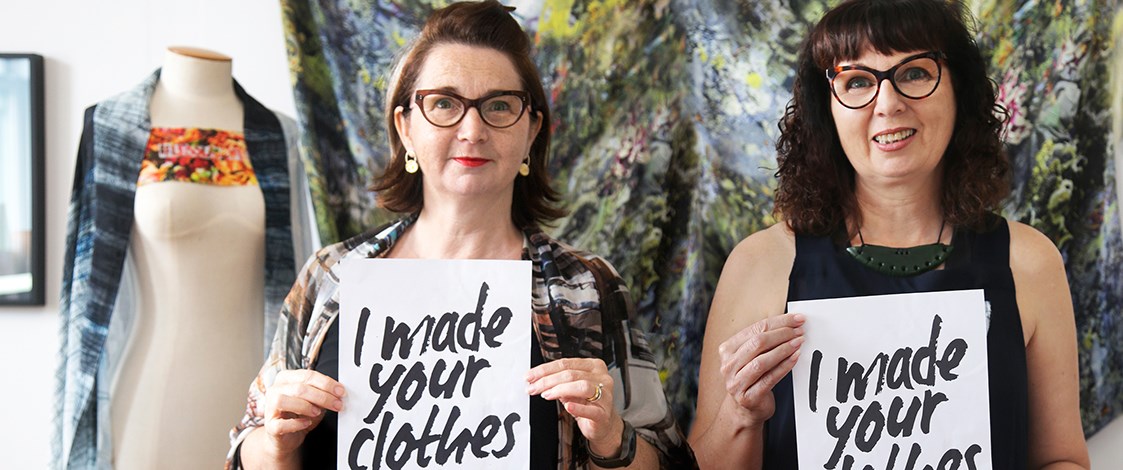
Combining their experience in the areas of fashion design, textiles and art, Kim Fraser and Deborah Crowe formed their design team in 1997. Writing after Fraser Crowe had won a succession of fashion awards in the late 1990s, art critic Mark Kirby noted in the Winter 1998 issue of Art New Zealand: "Their success is unusual because their designs are conceptually based, and, as such, do not fit within any of the customary fixed fashion categories."
Yet between 1997-2000 their high fashion women’s wear label, Fraser Crowe, retailed throughout New Zealand in stores such as World and Plume, and also in Sydney, Australia. Their work has also been exhibited in galleries throughout New Zealand, in a touring exhibition in Canada, purchased by Te Papa Tongarewa, the Museum of New Zealand and the Dowse Art Museum, and is held in private collections here and overseas. Two decades later, in 2017, Fraser Crowe relaunched as an online brand.
Kim and Deborah first met in the early 1990s as teachers at the Manukau Institute of Technology’s (MIT) Fashion Design department. Their first collaboration, Dual Outlook, won the Avant Garde and Supreme categories of the 1997 Smokefree Fashion Awards. They laughingly recall waking up in a quirky Wellington bed and breakfast hotel the morning after this big and unexpected win and asking each other: "What next?"
"We approached WORLD and they were keen to have our work – that’s how the Fraser Crowe label really began," Deborah remembers.
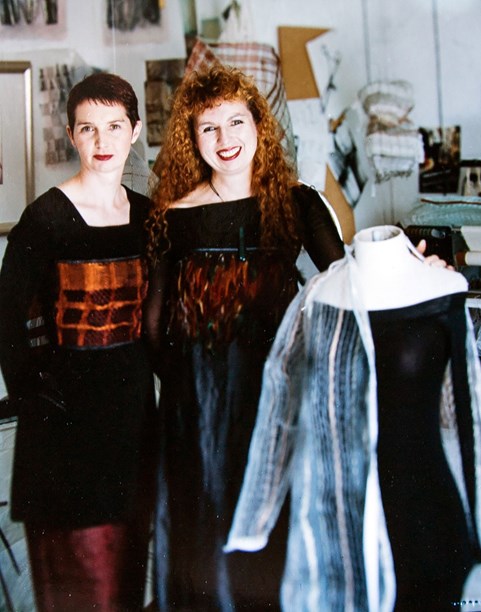
Deborah Crowe and Kim Fraser with their award-winning garment, 'Dual Outlook', 1997. Image © Fraser Crowe.
The following year their 'Pace Breaker', an ensemble complete with roller blades, again won the Avant Garde award while the 'Betty Grace' collection (in memory of their mothers) won the Moet et Chandon High Fashion Collection award.
"We’d realised we needed to show a range, so that was our focus," says Kim. "Although the Betty Grace collection had extravagant collars and coats, underneath there were very tailored garments. We wanted to demonstrate that Fraser Crowe could make clothes that were extremely wearable."
From the start their collaboration was a respectful acknowledgment of each other’s strengths and talents. Creatively they spoke the same language even though they came from completely different backgrounds – Deborah as an interdisciplinary artist often working in three dimensions, and Kim as a self-taught fashion designer.
Deborah grew up in Kirriemuir, Scotland, and studied in the Embroidered and Woven Textiles Department at the Glasgow School of Art. Kim, who affiliates to Ngāti Hako, grew up in Tokoroa. Both had mothers who made things and who passed away from cancer far too early in their daughters’ lives.
By the time she was 13 Kim was making clothes she could wear. "My mum had taught me how to sew from when I could just walk." After leaving school she trained in computer science, married and moved to Queenstown where she began designing and making intricate coloured leather clothing. She returned to Auckland in the mid-1980s and launched her own KimSkins label. She also worked with designer Maria Scally on their Shakti label and in 1990 won the first of two Benson & Hedges awards. Those successes led to an invitation to run the fashion design programme at MIT.
Deborah too, recalls her mother Grace as always knitting or making something. After art school she and her then husband got an opportunity to move to New Zealand. In Auckland she first worked at the Whitecliffe School of Art whilst continuing her own art practice. There were few people with textile degrees and her woven sculptural objects were considered unusual at that time. It was a chance meeting with sculptor Marte Szirmay that led to a part-time job at MIT. Here she and Kim shared a tiny office and began to dream up some big ideas.
In the first incarnation of the Fraser Crowe label, Deborah and Kim continued with their day jobs and often they would work into the small hours to complete their commercial designs.
By the start of 2000 MIT had closed its fashion department and life had begun to take the two women down differing pathways. Kim secured funding to start the country’s first fashion incubator project in Auckland and went on to pursue an academic career at the Auckland University of Technology, becoming a leading international researcher on textile waste. Deborah continued to teach and make art from her own studio, regularly exhibiting and winning art awards.
During these years the two women never lost touch and would meet, usually around Christmas, for a drink and a catch up.
In 2013 – not long after Vivienne Westwood made her "Buy less. Choose well. Make it last." statement at London Fashion Week – the next chapter of Fraser Crowe was being mooted. Deborah brought some of her digitally printed fabric samples and "that was the point where we decided to get together again creatively," Kim says.
In 2015 they reformed their company, to create locally made high end garments featuring unique digital art prints for real women with real shapes. The brand would give full expression to the political, ethical and environmental concerns they share about fast fashion trends.
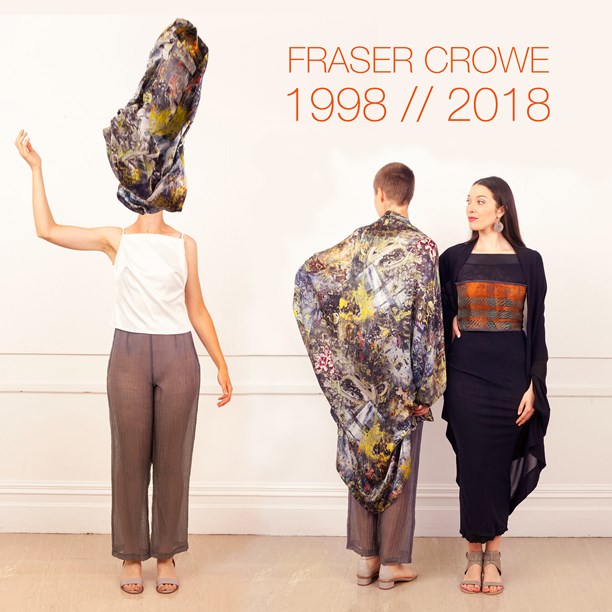
Image © Fraser Crowe.
Designing is very much a collaborative process. Each will play with ideas before they get together to formulate a product. Deborah executes the textile design whilst Kim is the pattern maker. The concept of minimum waste extends to fabric cutting and Kim is also mindful of having patterns that make work pleasurable for their garment makers. Runs are small – sometimes around five of one piece, with up to twenty for others.
Their insistence on local makers and suppliers can be challenging. Specialist services like pleating and dyeing are in short supply and even sourcing sustainable fabrics such as silk, merino, tencyl and viscose from transparent supply chains has become much harder as the garment industry here has shrunk.
They acknowledge that their products are not cheap and leasing clothing to wear for a special occasion is another sustainable option they offer.
Fashion politics are never far from the surface, though both women are wary of preaching. Alongside their fashion garment making, they have created a series of public workshops that as well as having a practical application such as re-stitching old but beloved clothing items, are also a way of encouraging wider discussion about consumption.
During Fashion Revolution Week in April 2018, Fraser Crowe distributed their special limited edition ribbon tags, 'Care, Ask, Know' (Who made my clothes?) on Auckland’s fashion conscious Ponsonby Road.
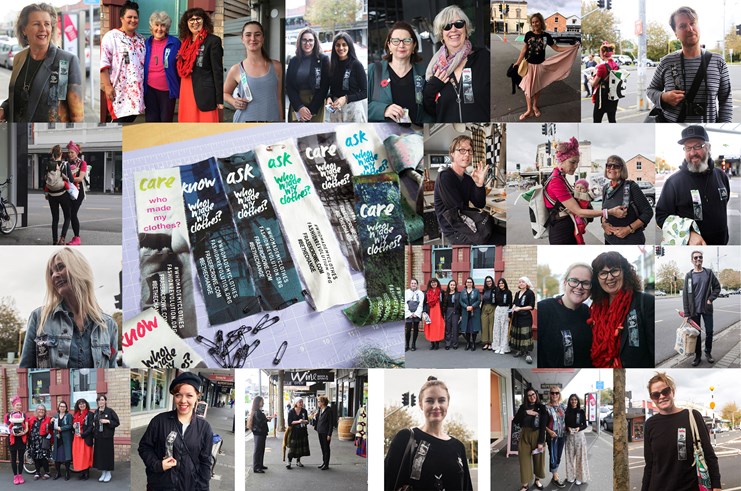
Fraser Crowe's Fashion Revolution Week ribbon share on Ponsonby Road, 2018. Image © Fraser Crowe.
In a similar vein, their #lesslandfill 'gang' patches, which come as a DIY kit packaged with a needle, threads and safety pins, is another small step, asking people to openly wear their convictions about reducing landfill waste and respecting textiles.
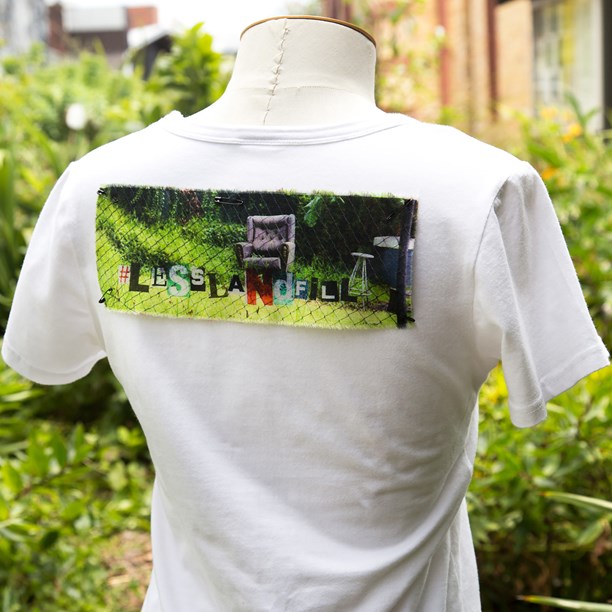
Fraser Crowe's #lesslandfill 'gang' patches. Image © Fraser Crowe.
Fraser Crowe sees these small acts as innovative ways to create conversations that encourage people to think about where their clothes and accessories come from. "This is not the main business of Fraser Crowe but it’s becoming more integrated into it," Deborah comments. "Our fashion philosophy incorporates our political beliefs but we don’t do it in a shouting way. We’re like quiet rebels."
Fraser Crowe's online shop closed in August 2019 with the partners going their own ways in their respective creative fields of art, fashion and textiles.
Text by Katherine Findlay. Banner image © Fraser Crowe.
Published August 2018. Updated August 2019.